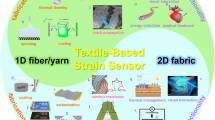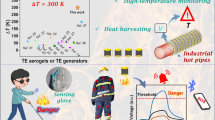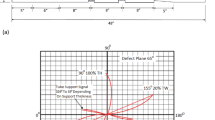Abstract
Elasto-magnetic sensors are widely used to measure the tensile force of cable structures. Generally, the size of current elasto-magnetic sensors is designed to be large enough to measure the tensile force of the entire cable. Therefore, the tensile force of a single steel strand in cables cannot be measured, which causes some engineering problems, such as that the uniformity of prestress tension and forces within steel cables cannot be determined. In this study, a single-strand elasto-magnetic sensor, called the EM17 sensor, is proposed to detect and monitor the tensile force of single steel strands. EM17 is the smallest sensor developed to date, with an inner diameter of 17 mm. In addition, a series of experiments were conducted to investigate the effects of temperature, position, shielding environment, strand relaxation, strand fatigue and sensor sealing performance on sensor accuracy. The field tests show that the EM17 sensors can accurately measure the tensile force of steel strands. The results show that the uniformity of the prestressed steel strand and the error between measurement and target values are within the range of 5%, which is considered satisfactory.
Similar content being viewed by others
References
Cappello C, Zonta D, Ait LH, Glisic B, Wang M (2018) Calibration of elasto-magnetic sensors on in-service cable-stayed bridges for stress monitoring. Sensors 18:466, DOI: https://doi.org/10.3390/s18020466
Chen Z, Wang M, Okamoto T, Sumitro S (2000) A new magnetoelastic stress/corrosion sensor for cables in cable-stayed bridges using measurement of anhysteretic. Paper for 2nd Workshop on Advanced Technologies in Urban Earthquake Disaster Mitigation, Kyoto, Japan
Cho S, Lynch JP, Lee JJ, Yun CB (2010) Development of an automated wireless tension force estimation system for cable-stayed bridges. Journal of Intelligent Material Systems and Structures 21:361–376, DOI: https://doi.org/10.1177/1045389X09350719
Deng N, Zhou Y (2020) The study on the influence of hanger’s different axial deflection based on weibull distribution. IOP conference series: Earth and environmental science IOP publishing, 052018, DOI: https://doi.org/10.1088/1755-1315/510/5/052018
Kim J, Park S (2020) Field applicability of a machine learning-based tensile force estimation for pre-stressed concrete bridges using an embedded elasto-magnetic sensor. Structural Health Monitoring 19: 281–292, DOI: https://doi.org/10.1177/1475921719842340
Kingman R, Rowland SC, Popescu S (2002) An experimental observation of Faraday’s law of induction. American Journal of Physics 70:595–598. DOI: https://doi.org/10.1119/1.1405504
Kvasnica B, Fabo P (1996) Highly precise non-contact instrumentation for magnetic measurement of mechanical stress in low-carbon steel wires. Measurement Science and Technology 7:763
Ma NJ, Gu LX, Peng CL (2021) An adjustment technique for tensions in the cables of concrete cable-stayed bridges considering the effect of cable-girder temperature difference. KSCE Journal of Civil Engineering 25(5):1806–1815, DOI: https://doi.org/10.1007/s12205-021-1145-z
Nguyen NV, Vu Q-A, Kim S-E (2020) An experimental study on stress relaxation behaviour of high strength steel wire: Microstructural evolution and degradation of mechanical properties. Construction and Building Materials 261:119926, DOI: https://doi.org/10.1016/j.conbuildmat.2020.119926
Sarawate NN (2008) Characterization and modeling of the ferromagnetic shape memory alloy Ni-Mn-Ga for sensing and actuation. PhD Thesis, The Ohio State University, Japan
Sumitro S, Jarosevic A, Wang M (2002) Elasto-magnetic sensor utilization on steel cable stress measurement. Concrete structures in the 21st century: Proceedings of the first FIB congress, Osaka, 13–19
Sumitro S, Kurokawa S, Shimano K, Wang ML (2005) Monitoring based maintenance utilizing actual stress sensory technology. Smart Materials and Structures 14:S68, DOI: https://doi.org/10.1088/0964-1726/14/3/009
Sun S, Liang L, Li M (2021) Condition assessment of stay cables via cloud evidence fusion. KSCE Journal of Civil Engineering 25(3): 866–878, DOI: https://doi.org/10.1007/s12205-021-0139-1
Wang G (2006) The application of magnetoelasticity in stress monitoring, University of Illinois at Chicago
Wang ML, Chen ZL, Koontz SS, Lloyd GM (2000) Magnetoelastic permeability measurement for stress monitoring in steel tendons and cables. Nondestructive Evaluation of Highways, Utilities, and Pipelines IV International Society for Optics and Photonics 492–500, DOI: https://doi.org/10.1117/12.387842
Wang ML, Lloyd GM, Hovorka O (2001) Development of a remote coil magnetoelastic stress sensor for steel cables. Health Monitoring and Management of Civil Infrastructure Systems, SPIE, 122–128
Wang M, Satpathi D, Koontz S, Jarosevic A, Chandoga M (1999) Monitoring of cable forces using magneto-elastic sensors. Computational Mechanics in Structural Engineering. Elsevier, DOI: https://doi.org/10.1016/B978-008043008-9/50064-8
Wang ML, Wang G, Zhao Y (2005) Application of EM stress sensors in large steel cables. Sensing Issues in Civil Structural Health Monitoring. Springer, DOI: https://doi.org/10.1007/1-4020-3661-2_15
Ye H, Chen W (2007) Application of the elasto-magnetic sensor in external steel cable stress measurement. Research & Application of Building Materials 10:18–20
Zhang R, Duan Y, Or SW, Zhao Y (2014) Smart elasto-magneto-electric (EME) sensors for stress monitoring of steel cables: Design theory and experimental validation. Sensors 14:13644–13660, DOI: https://doi.org/10.3390/s140813644
Zhang S, Zhou J, Zhou Y, Zhang H, Chen J (2019) Cable tension monitoring based on the elasto-magnetic effect and the self-induction phenomenon. Materials 12:2230, DOI: https://doi.org/10.3390/ma12142230
Zheng Y, Chen JZ, Zhang KC (2014) Research on transverse prestress mechanical properties experiment of PC box girder. Advanced Materials Research (912–914):757–760, DOI: https://doi.org/10.4028/www.scientific.net/AMR.912-914.757
Zhou Y, Deng N, Yang T (2020) A study on the strength and fatigue properties of seven-wire strands in hangers under lateral bending. Applied Sciences 10:2160, DOI: https://doi.org/10.3390/app10062160
Acknowledgments
The authors would like to thank the National Natural Science Foundation of China (52268048), the Guangxi Science and technology Major project of China (Gui-KEAA22068066).
Author information
Authors and Affiliations
Corresponding author
Rights and permissions
About this article
Cite this article
Guo, X., Deng, N., Yu, M. et al. Prestress Tension Measurement Using a Single Electromagnetic Sensor. KSCE J Civ Eng 27, 4323–4331 (2023). https://doi.org/10.1007/s12205-023-0915-1
Received:
Revised:
Accepted:
Published:
Issue Date:
DOI: https://doi.org/10.1007/s12205-023-0915-1




